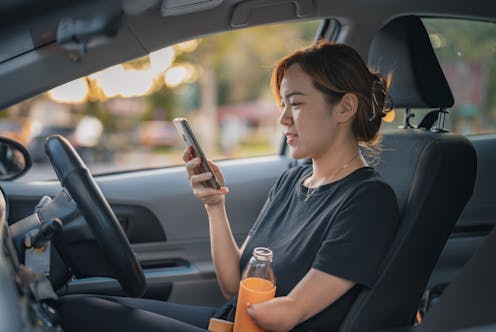NDIS reforms aim to make the scheme fairer. But we’ve found the groups struggling to gain access
- Written by The Conversation

When the National Disability Insurance Scheme (NDIS) was established in 2013, one of its driving aims was to make disability services and support systems fairer.
However, our new research shows significant inequalities remain, with some groups finding it much harder than others to be deemed eligible and access a funding plan.
Recent NDIS reforms in part aim to address inequity, and to manage costs.
So, what can we do to ensure these reforms don’t further embed existing inequalities? Here’s what we found.
Inequalities in scheme access
To receive funding from the NDIS, participants are required to demonstrate their eligibility.
We wanted to explore whether decisions about eligibility were leading to inequalities in who could access and use NDIS funding.
Our study looked at the individual NDIS applications of 485,676 people aged seven or older, made between 2016 and 2022, to see if they were deemed eligible.
We then compared differences in eligibility rates between groups, considering:
- age (applicants 55 or older versus those under 55)
- gender (women and girls versus other applicants)
- socioeconomic disadvantage (those from the poorest 30% of areas versus all other areas).
Who is deemed ineligible?
We found some groups are more likely to be rejected from the scheme than others: women and girls, people aged 55 and over, and those who live in disadvantaged areas.
Within these groups, eligibility rates also vary.
For example, people with intellectual disability, autism, and brain injury or stroke were very likely to be deemed eligible, regardless of their age, gender or socioeconomic disadvantage (900 or more were accepted per 1,000 applicants).
However, people with physical disability and psychosocial disability (disabilities that can arise from a mental health issue, such as bipolar disorder or schizophrenia) were significantly more likely to be rejected.
This was true across groups, but particularly evident among women and girls.
We compared eligibility rates within every 1,000 applications made by women and girls versus men and boys.
Among those who had physical disability, 145 more women and girls were rejected, compared to men and boys.
Among those with psychosocial disability, 83 more applications were deemed ineligible for every 1,000 applications made by women, compared to men.
Age was also a factor. Older Australians with a physical disability had 235 fewer approvals per 1,000 applications than those with physical disability under 55.
What about once they’re eligible?
Inequalities are more pronounced among those trying to prove eligibility for the scheme.
Once accepted into the NDIS, our research found women and girls, and people living in poorer areas, received similar amounts of funding as men and boys, and those living in better-off areas.
This budget is based on what the participant wants to achieve in everyday life and their support needs relating to their disabilities.
However once people receive and are using plans, we then see some differences in how much these people are able to spend. This relates to factors such as the availability of services in an area or whether culturally safe supports are available.
We found that women with psychosocial disability spent more than men with similar sized budgets.
This result could reflect that women with psychosocial disability on the NDIS have higher support needs than men.
It could be that it is harder for women to get onto the scheme in the first place, so those who are deemed eligible have more significant disability than men.
But we need more research to unpack this further.
Why do we see these inequalities?
In the early days of the NDIS, to help fast-track applications, the National Disability Insurance Agency (which runs the NDIS) specified a list of diagnoses closely related to disability.
Known as list A conditions, people with these diagnoses are automatically eligible for the NDIS.
Disabilities likely to be associated with a list A diagnosis include level 2 or 3 autism (requiring substantial or very substantial support) and intellectual disability.
However some people who could have permanent and significant disability, may have a diagnosis not on list A, such as Down syndrome and motor neurone disease. They must provide a broader range of evidence on the impact of their disability to be eligible.
If they face other challenges – such as socioeconomic disadvantage – it may be harder for them to collect this evidence. For example, they may not be able to afford private health care that would help support their application.
This might explain why people who do not have a list A diagnosis are less likely to prove their eligibility for the scheme.
Where next for the scheme?
Following recommendations from an independent review into the NDIS, the National Disability Insurance Agency is currently making changes to how it assesses eligibility.
One of the changes suggested is removing list A classifications altogether.
Instead, the agency will use a suite of functional assessment tools. These are still in the process of being designed, but they are one way to assess a person’s ability to perform everyday tasks and identify the level of support they require.
This approach aims to assess more objectively and fairly how much someone is impacted by their disability.
However, there are longstanding critiques of these tools. These include concerns they are not safe for minority groups, such as those with a culturally or linguistically diverse background, LGBTQIA+ people, and First Nations applicants.
Our new research demonstrates how and why some inequalities arise. We should put this understanding front-and-centre in any changes to the NDIS.
Most importantly, we should make sure reforms are co-designed with a broad range of different groups, to ensure we don’t perpetuate old inequalities or introduce new ones.







